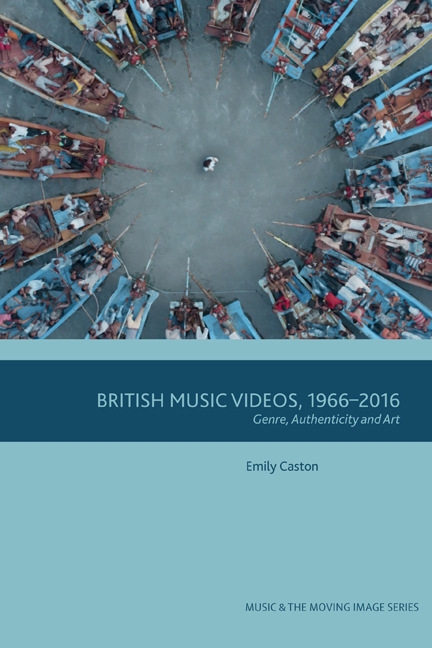8 - Art, Commerce and America
Published online by Cambridge University Press: 01 October 2020
Summary
In this chapter, I examine the differences between American and British videos from 1966 to 2016. I will begin by examining the impact Britain is thought to have had on the US music video industry through the first, second and third so-called ‘British Invasions’ of pop music. Then I will move on to look at distinctively British tendencies in music video, particularly in the pre-2000 period, drawing together the findings of the previous chapters.
INFLUENCE: FIRST, SECOND AND THIRD BRITISH INVASIONS
The argument underlying this book is that what we now call the music video began in a social, artistic and industry sense in London in the 1960s; the US music industry adopted it after seeing British videos on TV and realising in the mid-1980s that music videos were the most effective marketing method of the age to make money from music. They adopted the British style, mixed it with their own Hollywood musical style, higher budgets and superior slick effects, set designs and polished post-production, and served it back to the British as a US invention. As MTV was transformed from a small station transmitting only in New York into a high-end corporate marketing model, the world took note. But if the distinctively ‘80s music video began life in the UK, why was that, and what were the consequences of that?
In 1964, over 80 per cent of records sold in the USA were British. The concept of the ‘British Invasion of America’ was allegedly coined by CBS news anchorman Walter Cronkite to describe this. It's said to have begun in February 1964, when The Beatles first appeared on the Sunday-night variety programme The Ed Sullivan Show (CBS 1948–71). When British bands weren't willing or able to travel to the States to perform live to meet demand from TV shows like this, they would send a video instead. The role of music video in the first British Invasion can be illustrated by the Dave Clark Five, an English group formed in 1957. Originating in North London, the band was promoted as the vanguard of a Tottenham Sound (as distinct from Liverpool’s Mersey Beat sound).
- Type
- Chapter
- Information
- British Music Videos 1966 – 2016Genre, Authenticity and Art, pp. 123 - 141Publisher: Edinburgh University PressPrint publication year: 2020



